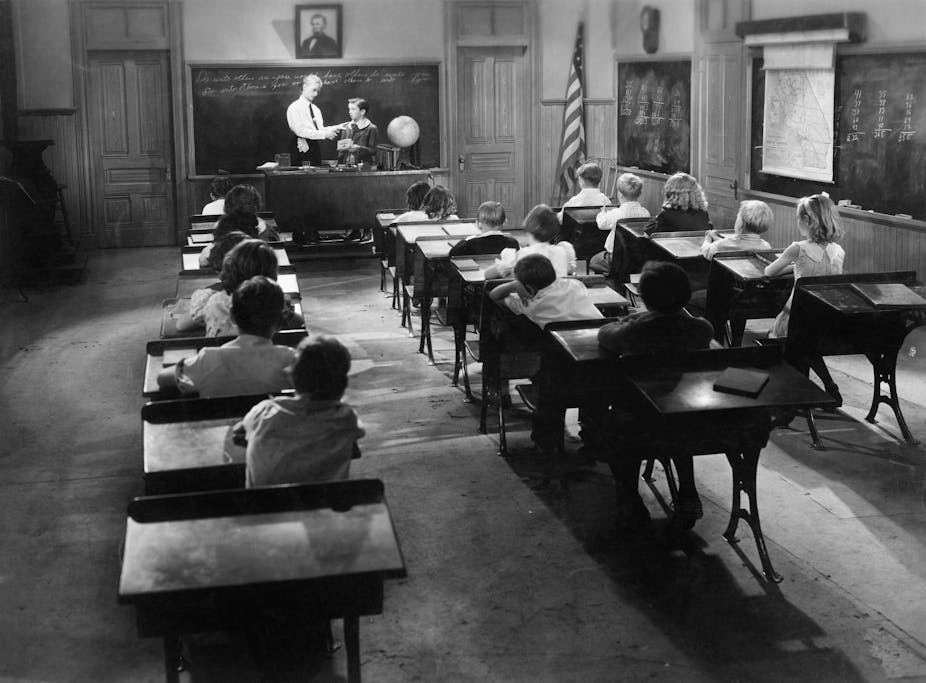EDUCATIONAL APPROACHES

Teacher centered approach
Its main OBJECTIVE is for the student to learn
Characteristics
It has as its main axes the teacher and the curricula.
It highlights the importance of the data over the concept.
It gives little importance to participatory activity
The memorization is rewarded
The unreliable reproduction of the transmitted is sanctioned
As a result, the creativity and the personal elaboration of the student are usually not present.
Results of this model
It promotes a passive activity of students
Students do not fully develop critical or reasoning abilities
Individualism is encouraged
The principles of solidarity and cooperation are not taken into account.
A great difference is established between the teacher and the student.
Representative approaches

The traditional school
Its foundation was scholastic which means method and order
The Teacher
... is the foundation and condition of educational success
... is responsible for organizing knowledge, isolating and elaborating what must be learned
... is a model and guide, who must be imitated and obeyed
Discipline and punishment are considered fundamental
The teaching method is the same for all students and on all occasions
Great importance is given to the transmission of culture and knowledge
This position dominates contemporary university education.

Behaviorism
Focuses on the idea that all behaviors are learned through interaction with the environment
It focuses on the study of observable behavior to control and predict it.
Behaviorists define learning as the acquisition of new behaviors.
Two proposed variants
Classical Conditioning
Describes an association between stimulus and contiguous response
If we know how to raise the appropriate stimuli, we will obtain the desired response
Instrumental and Operant Conditioning.
Seeks to consolidate the response according to the stimulus
Uses rewards and punishment to modify behavior
Behavior that is rewarded is likely to be repeated
Behavior that is punished will rarely occur
Student centered approach

The learner is considered the subject of education.
The learner´s learning as a starting point.
Discovery, elaboration, invention and confirmation of knowledge by the learner.
Human beings are educated through the world.

Model process: Action-thinking-action
Teacher as a companion to stimulate analysis and reflection.
Focus on learning to learn and the student´s own reasoning.
Development of the capacity for deduction, relation and elaboration of synthesis.
Active participation of the student and training for participation in society.
Importance of Celestine Freinet in the development of educational models.
Freinet´s pedagogical mediation in students´ achievement
Criticism of the traditional teaching model.
Freinet Pedagogy focused on experimentation and research adapted to children.
Freinet techniques as tools to facilitate educational processes.
Attention to the daily life of students as a basis for learning.
Elimination of frontiers between society, environment and school.
Criticism of the scholastic model and its passive approach to the child as a receiver of information.
Recognition of the importance of the child´s inner life, behavior and personality.
COMPETENCY BASED EDUCATION
From tracking time to tracking competence.
Competencies as a map to learning.
Ongoing assessment with support
The time and path of learning varies from student to student
Focuses on the demonstration of desired learning outcomes as the center of the student learning process

Performance focused model
Are knowledge, skills, and behaviors of a student graduating from a program.
Functions
Generation of new knowledge (research functions).
Training of highly qualified people (the role of education).
Provide services to society (the social function).
The ethical function, which implies social criticism.
What is a competence?
Defines competencies such as the ability and disposition for performance and interpretation.
However the various authors agree on the following:
Ability to learn to learn.
Ability to apply knowledge in practice.
Capacity for analysis and synthesis.
Ability to adapt to new situations.
Interpersonal skills.
Ability to generate new ideas (creativity).
Oral and written communication in the language itself.
Problem solving and decision making.
Critical and self-critical capacity.
Basic computer management skills.
Collaborative work.
Basic general knowledge about the area of study, discipline or profession.
Ethical commitment (values).
Knowledge of a second language.
Appreciation of diversity and multiculturalism.
Research skills.
Teacher roles:
Learning is building skills
The subject and activities must be interdisciplinary.
Theory and practice
Design work projects for targeted research.
Strategies for teaching and learning as research.
Practical activities
Direct student activities
Conceive and use evaluation as a learning tool.
Evaluate knowledge, skills, attitudes and values.
Evaluate correctly
Use research and innovation
Strongly associate teaching and research.
Work with peer students from different countries.
Be a researcher

Problem resolution
The learning process requires the following steps:
First, the problem is defined and analyzed to understand it.
Ways of modifying the situation (solution strategies) are sought.
The solution that is considered best is chosen.
Then it is applied.
And finally, the results obtained are valued.

The new school
Characteristics
Promote the active participation of the student in the learning process through the use of pedagogical techniques
Based on psychology, it focuses on treating each student according to their abilities.
Look for relationships based on affection and companionship to encourage the spontaneous development of the student
Education must adjust to changes in content and encourage creativity and individuality of students.

Constructivism
The student is an active part of the process and builds their own learning
Consider the interests, attitudes, beliefs and differences of the student.
The teacher encourages student autonomy and initiative

Critical thinking
It consists of the following knowledge, skills and attitudes.
It is characterized by managing and mastering ideas
Encourages creativity


